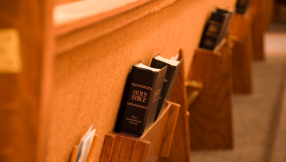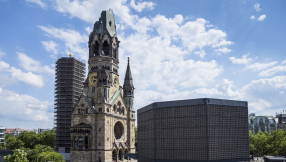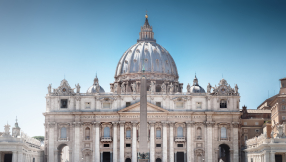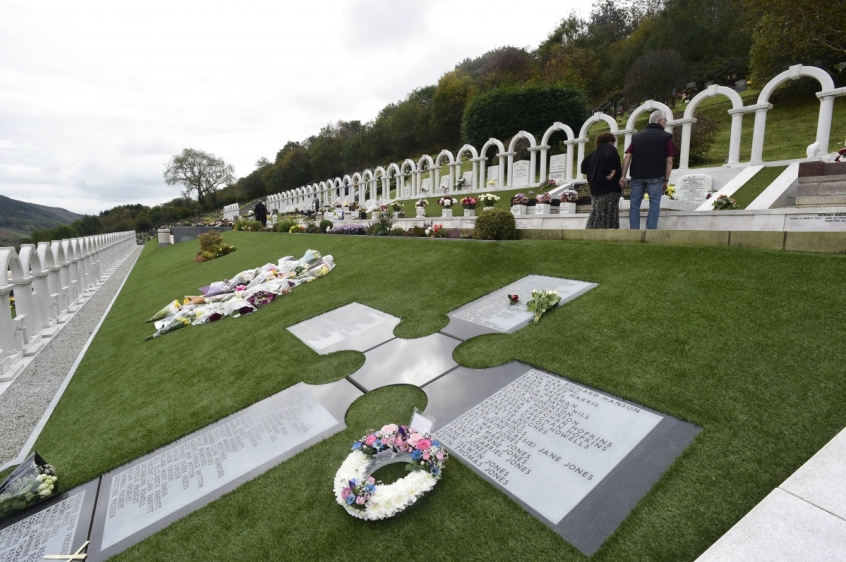
Fifty years later the word still sounds like a terrible lament: Aberfan. To speak its name feels like summoning the souls of the unhappy dead; calling the wet soil to account for its monstrous greed. And the inferno of smoke and slurry that swamped Aberfan on October 21, 1966, continues to haunt Wales.
I was six years old when it happened, a schoolboy in Llanelli, Carmarthenshire. I remember our classroom teacher telling us of the disaster but we were too young to understand its meaning. As were the children of Aberfan, whose ordinary day was torpedoed by a coal tip which hit their school with the force of jumbo jet.
It was by all accounts a typical autumnal day. Eyewitnesses remember a cold and sunny morning, with little wind. This explains an abiding memory of early mist hanging over the mining village.
Aberfan is five miles to the south of Merthyr Tydfil and some 20 miles to the north of Cardiff, built along the banks of the river Taff. It had around 3,000 inhabitants. Coal mining employed the majority of men in the area and 850 of them worked in the nearby Merthyr Vale colliery. And on the Merthyr side of the village stood seven towering coal tips.
Heavy rain had fallen overnight and the group of workmen who arrived at 7.30am at tip number seven the following morning had a terrible shock. The 111-foot coal mountain had subsided, leaving an enormous crater-like hole in its centre. They could see that a nearby crane was about fall into this newly formed abyss.
Someone went and raised the alarm to colliery management, just as they had in 1963 when the same tip subsided dramatically but without moving downhill. Within a very short time this enormous hole had grown by a further 12 feet. The men went to their work, leaving the crane driver looking down from his elevated position. To his horror he witnessed a sea of slurry, coal and other waste pouring out of the hole like a volcano. But this was only the start. At about a quarter past nine, the whole tip burst open with a crack of dark energy. Those who witnessed its progress from above said this mass of coal was like a wave thirty feet wide and thirty feet high. It was a manmade tsunami tipped steeply into the quiet mists below.
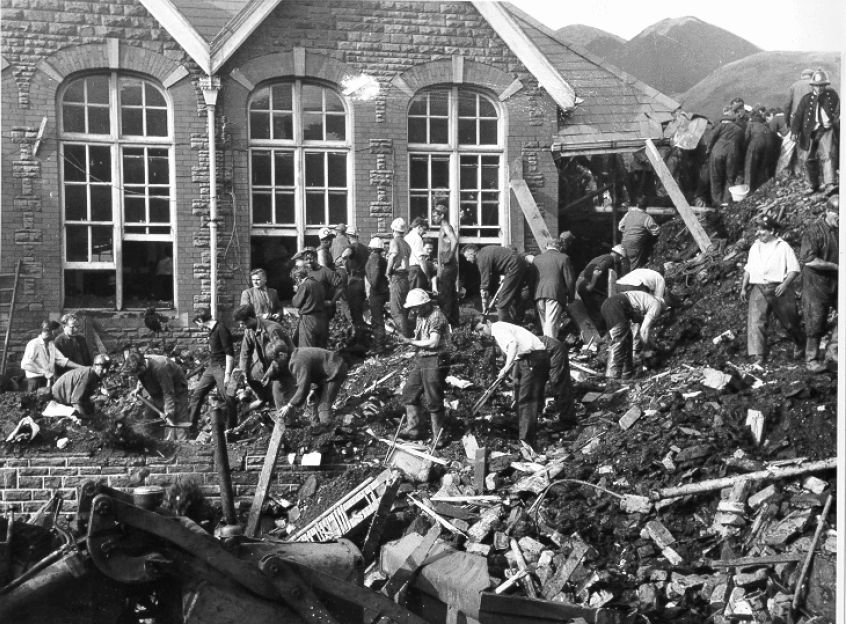
Two farm cottages were demolished and their occupants killed immediately. The terrifying large and fast black mass gathered pace as it hurtled down to the village only a few hundred yards away. Mothers on their way home from school, shoppers and shopkeepers, old men having a quiet cigarette, heard a noise described as like a jet plane crashing into the mountainside. Between 9.15 and 9.20 that morning, it killed 144 people, most of them children aged between four and 11 years of age. In total, 116 children lost their lives as this predatory coal bomb slammed into Pantglas Junior school. It remains the worst disaster involving children in modern British history.
Fifty years on and I'm a church minister in south Wales. Amid the many reflections and reminiscences available online and on TV and radio, I'm particularly interested in my counterparts. How did local clergy and their churches respond to this crisis? The more I've read, the more I'm moved by the leadership, humanity and faith shown by Aberfan's pastors and priests in the aftermath of that catastrophe. And one man in particular stands out.
Rev Kenneth Hayes was the minister of Zion Baptist Chapel in the nearby village of Merthyr Vale. He and his wife Mona had two children. Seven-year-old Gwilym was at home recovering from an operation, but his nine-year-old brother Dyfrig was at school. Pantglas Junior School, Aberfan. Like all the other parents, Kenneth and Mona rushed to the scene and saw a school drowning in coal, stone and brick buildings crushed by the force of the now silent avalanche.
Kenneth spent that day on his knees, using his hands to dig into the rubble to recover bodies. Vainly he searched for Dyfrig, who lost his life that day. But for the next three days, Kenneth visited every family affected by this tragedy, compiled a list of all the dead children and adults and helped in forming a relief committee. He sought to comfort the bereaved even as he and his wife were dealing with their own hammer blow of grief.
On Sunday October 23, Kenneth was leading worship in his own church, Zion Baptist Chapel. It was a much smaller congregation that day, around 20 adults and four children. He read from Psalm 90 and the closing verses of Romans chapter eight: "Nothing will separate us from the love of God." During the sermon he called for an end to the tipping of coal waste in the valleys and is then reported to have said these words: "Let us thank God that things are not worse. We must not be bitter but must approach it with a spirit of love. Let us be thankful for miracles and thank God for those who survived." The service closed with this hymn:
Safe in the arms of Jesus, Safe on His gentle breast There, by His love o'ershaded, Sweetly my soul shall rest. Hark ! 'tis the voice of angels, Borne in a song to me. Over the fields of glory, Over the jasper sea.
As the congregation sang, Kenneth broke down in the pulpit and wept openly. This is how the Independent later described the scene:
"On the Sunday after the disaster, the day after his son's body had been found, he preached in his chapel to an audience of journalists, many of them in tears throughout."
In the months that followed, Kenneth and Mona raised an appeal for toys for Aberfan's surviving children. This stimulated a huge response in Britain and beyond. Their home also became the place where a local solicitor took statements that would later, much later, prove the National Coal Board's (NCB) culpability for the disaster. This was no savage act of God but a symptom of the NCB's neglect and recklessness. This was literally an accident waiting to happen.
Kenneth Hayes died in 1997. This is how this event was cited in the Independent newspaper:
"Kenneth Hayes, clergyman: born Risca, Glamorganshire 1930; married (one son, and one son deceased); died Sheffield 25 December 1997."
His obituary contains further details of the sermon he gave in Zion on Sunday October 23, 1966:
"The end of chapter 8 of Romans is a great summary of faith – 'What can separate us from the love of God?" – it's a passage I always use when there's a personal tragedy or disaster and that's a message we always try to emphasise. 'I am certain that nothing can separate us from the love of God, neither death nor life, neither angels or other heavenly rulers or powers, neither the present nor the future..." As far as we're concerned now, we've still got two boys. We're only separated for a time. One day we're going to meet. The parting and the loneliness and being without him is terrible, but it's not for ever."
Aberfan conjures up many memories and phantasms. It's hard to get beyond the mental image of that black and vast monster killing all in its path. But it's also a community that found its feet and reached out to its many shattered homes. And lest we forget, wounded healers like Rev Kenneth Hayes.










